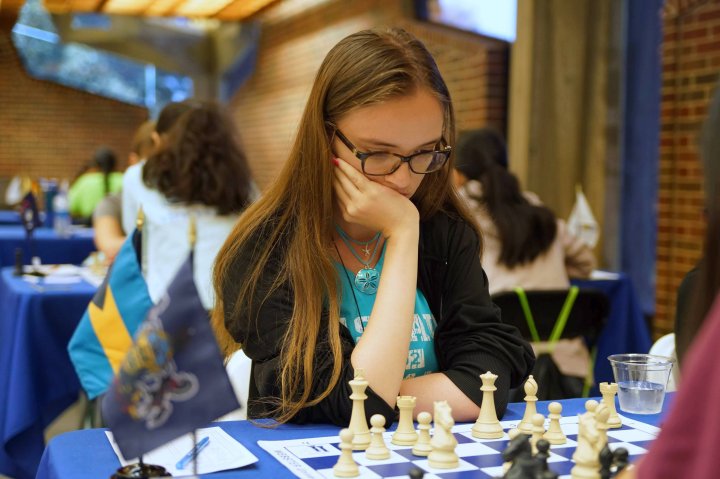


My career in diplomacy has given me the privilege of living in many of the great chess countries of the world, including Russia, China, Hungary, Iceland, Azerbaijan and Croatia. It wasn't accidental that I directed my assignments to places where I could pursue my love for chess. So when I was suddenly assigned to a three-year tour to The Bahamas, I was concerned about my chances of finding good opportunities in chess.
I needn't have worried. While the chess community in The Bahamas is tiny, it is passionate and growing, especially now that some influential sponsors have stepped forward to give a significant boost to the development of chess in this island nation.
I had noticed while living in another great island nation, Iceland, that players tend to be a bit underrated, as the community is generally smaller and the players really beat each other up, making it more difficult to raise one's rating to where it should be. This is starker in The Bahamas, where there are less than a dozen active stronger players. I had to face the same players in each tournament I played, and I saw their ratings swing wildly between the 1600s and 1900s.
With such a small chess community, the few stronger players get to play regularly at the Olympiad, giving them valuable experience and the chance to bring home some outsider rating points. The prime example of this is the very first FIDE Master in The Bahamas, Cecil 'Carver' Moncur.
Cecil Moncur (left) vs Ted Cross | Photo: Andre White
Playing so often in Nassau, Carver has never yet been able to push his rating beyond the 1900s, yet he earned his FM title legitimately with fantastic performances in the Olympiads (where the rating requirement is waived). He's a tough, well-prepared player, and I've always both dreaded and enjoyed playing against him.
Shortly after I arrived in The Bahamas, Swedish property developer Orjan Lindroth stepped forward as a new benefactor for Bahamas chess. He lent his aid to the development of youth chess, helped The Bahamas send a women's team to the Olympiad for the first time, and inaugurated the strongest chess event in the country. The Old Fort Bay Invitational Chess Championship has a prize fund of $5000 and brings all the strongest players in the country together to compete to get their names added to the huge trophy.

Entrance to the Old Fort Bay Club | Photo: Old Fort Bay Club
Since I wasn't a Bahamian player, I felt truly honored to be invited to the first invitational. The six top players in the country played a double round-robin, and it wasn't easy to grind the way to victory there. I felt very fortunate to win that event with seven wins and three losses. Mr. Lindroth made the event special, hosting it in the gorgeous Old Fort Bay Club and bringing in Cuban grandmaster Renier Gonzalez to do commentary and analysis of the games.
GM Renier Gonzalez, Ted Cross and Orjan Lindroth | Photo: Andre White
The format was changed the following year to allow up-and-coming youth players to participate, so it became an 11-player single round-robin. I surprised myself by managing an undefeated six win four draw 8/10. Given how tough it had been, could I possibly pull off a hat trick in my third and final year here?
The 2019 edition of The Old Fort Bay Invitational really showed me the great future chess has here in The Bahamas. Four top youth players showed off their skills, with me coming very close to defeat against talented newcomer Nathan Smith.
Polina Karelina has won the Bahamas Junior Champion title three times in a row. She held down first board for the open team at the last Olympiad, and she plays in every tournament that comes along.

Polina Karelina | Photo: Paul Truong
Four-time (and current) Bahamas National Champion Kendrick Knowles was my nemesis during my three years here. In the eight times we faced each other, I went +3 -4 =1. He was the only player to defeat me in this event in 2019.
Bahamas National Champion Kendrick Knowles | Photo: Gurt Smith
In the end I did pull off my third victory in a row in the invitational (+7 -1 =2), something I will always be proud of as I think back on these splendid three years in The Bahamas. The players and organizers are all so kind. They decided I should keep the large invitational trophy as I depart for Italy this summer. In an article for the local newspaper, the president of The Bahamas Chess Federation Elton Joseph called me "a friend of The Bahamas", which may be the nicest compliment I've ever received. I hope to visit future Olympiads when I can, and the first thing I will do is head over to shake the hands of these wonderful Bahamian players. The organizers are considering widening the invitational to regional players, so keep The Bahamas in mind for your future chess endeavors!